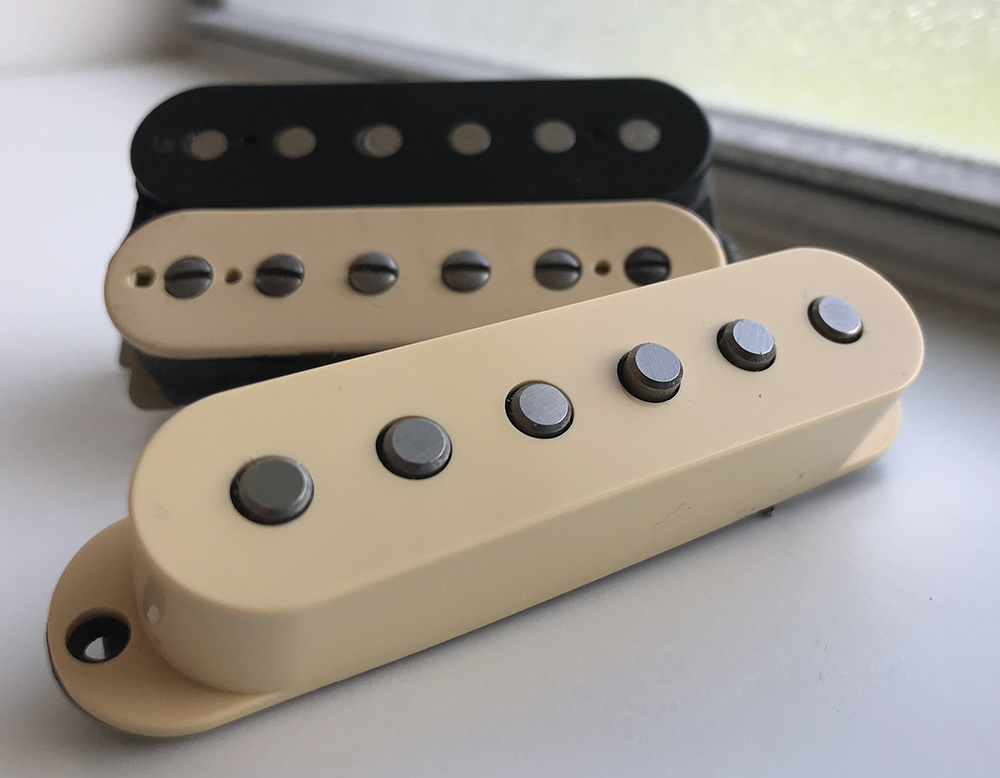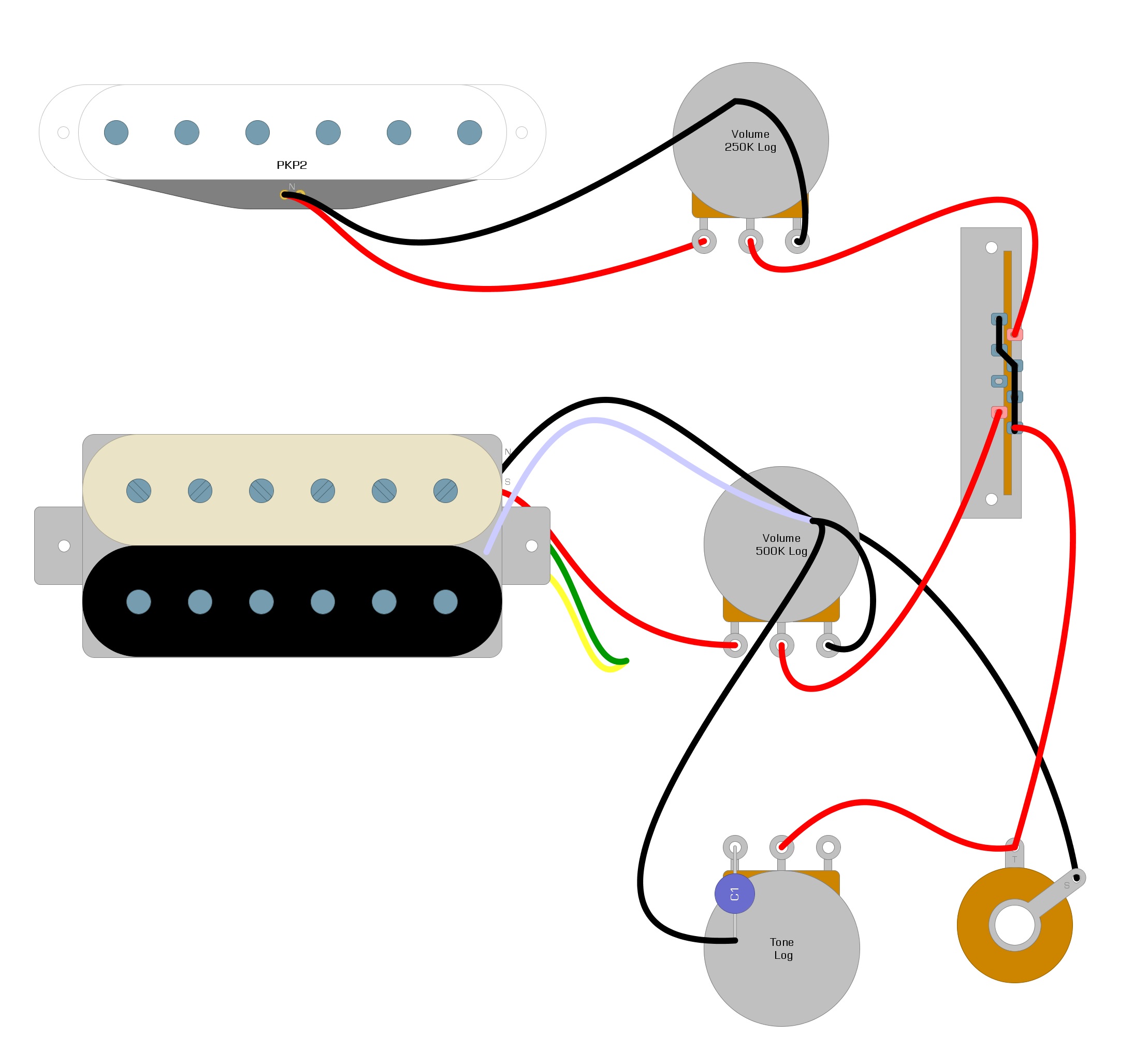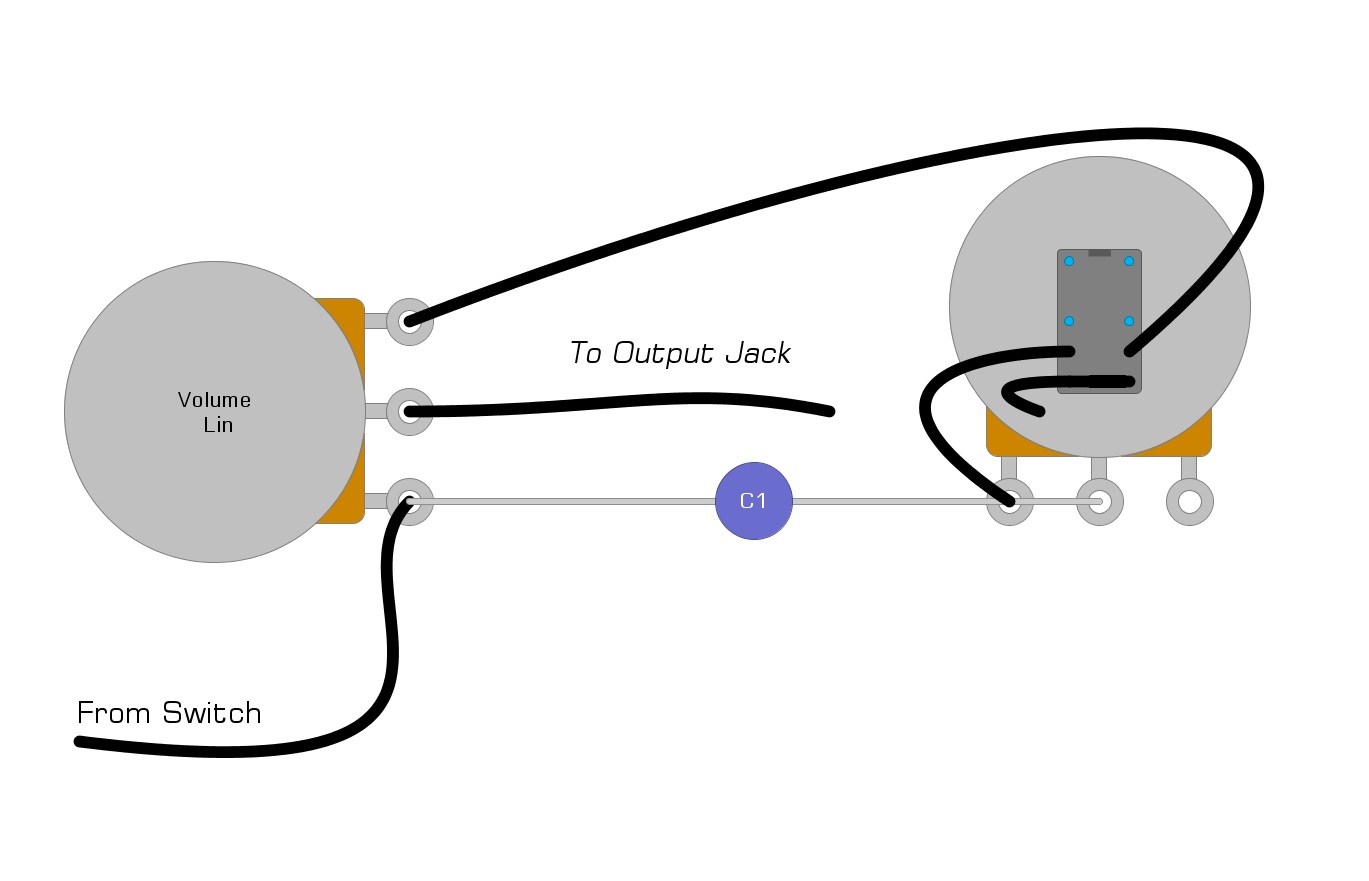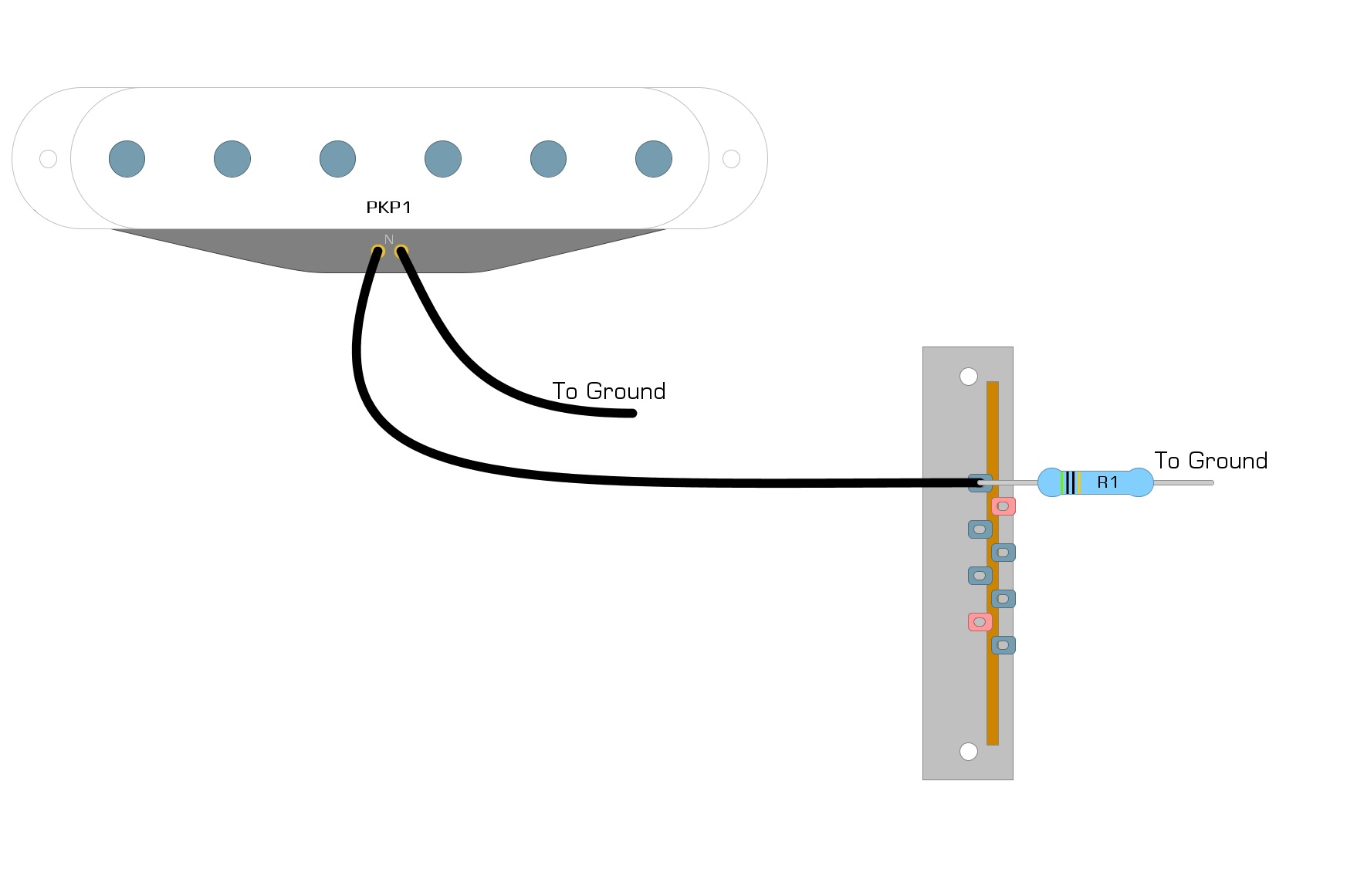
By Ed Malaker
Posted 11/27/2019
There are plenty of discussions on the web about the correct value pots to use for just single-coil pickups or humbuckers, but very little information about mixing humbuckers and single-coil pickups on one guitar.
If you have a guitar that mixes humbuckers with single-coils, you might be wondering if you’re using the best value pot. We’re going to help answer that question and take a look at what options are available to get the best tone possible from your guitar.
A Quick Overview of Potentiometer Value
The first thing we should clarify is what the value of a volume or tone pot has to do with the tone of a guitar.
Without getting too scientific, the volume and tone controls connect to ground, and a side effect of that is they create a path for your high-end frequencies to escape. Think of the value as a wall that your high-end frequencies need to jump over to escape. The higher the value, the higher the wall, and the harder it is for the high end to escape, which results in a brighter tone going to your amp.
Higher value pots make your guitar sound brighter. Lower value pots make your guitar sound darker.
Standard Values
Often, when guitarists talk about the values of their volume and tone pots, they are talking about a guitar such as a Fender Stratocaster or a Gibson Les Paul that has one or more of the same type of pickup in the guitar. There are countless models and brands of pickups, but electric guitar pickups are usually one of two kinds: single-coil or humbucking.
Single-Coil Pickups
The Fender Strat, Fender Telecaster, and countless other guitars use the single-coil pickup, which is known for its in-your-face sound, bite, and clear notes. Single-coil pickups are also known for piercing sharp tones that are brittle and harsh.
To combat the harsh tones of single-coil pickups, we pair them with 250k pots. The 250k pots allow enough high-end frequencies to escape, warm up the tone, and take off some of the harsh edges.
Humbucker Pickups
The Gibson Les Paul, Gibson SG, and thousands of other guitars use humbucker pickups. Humbucker pickups are nothing more than two single-coil pickups working together. The two coils are close to one another, creating a slight phase cancelation between them. This phase cancellation effect causes high-end frequencies to cancel out, producing a warmer tone than is produced by a single-coil.
To prevent the loss of any further high end, we pair the humbucker pickups with 500k pots. The 500k pots do an excellent job of preserving what high-end remains after the phase cancelation.
Combination Pickups
Guitars that use a combination of single-coil and humbucker pickups are known as Super Strats. Ibanez, Jackson, and many other guitar companies produce guitars with combination pickup schemes.
For the guitarist in search of the perfect tone, however, mixing humbuckers and single-coil pickups can present a real problem. With such a combination, choosing to go with the 500k pots can make your single-coils sound harsh and brittle. Going with the 250k pots can cause your humbuckers to sound dark and muddy.
Unfortunately, there is no perfect solution to mixing humbuckers and single-coils. There are quite a few steps you can take, however, that will help the situation and act as a workaround.
Pickup Selection
Fortunately for anyone mixing double and and single-coil pickups, there is no shortage of pickups designed to create any tonal characteristics. It’s not impossible, or even hard, to find a single-coil that sounds dark or a humbucker that sounds bright. The challenge is finding pickups that sound good together.
If you are using a 500k pot and it’s making your single-coil pickup sound harsh, replacing the pickup with something designed to create warmer tones is likely to leave you more satisfied than any other combination we can suggest.
The downside to this approach to mixing humbuckers and single-coil pickups is that it can get expensive and tedious, but it’s a fantastic way to experiment with your tone.
Middle Ground Pot
If pickup shopping sounds expensive, there are still several options open to you, such as using a middle ground pot. Potentiometers are available in any value, and there are plenty besides 250k and 500k. Perhaps a 300k, 350k, or 400k will solve the problem and give you a nice even tone through each switch position.
The downside to this method of successfully mixing humbuckers and single-coil pickups is that you’ll have to hunt down each pot value, most likely online. It can take a while waiting for shipping and you may have several pots left over.
Two Volumes, One Tone
If your guitar has one volume and two tone controls, you can change it to have two volume controls and one tone. This way, you can give each type of pickup a volume control. The single coil can use a 250k volume while the humbucker uses a 500k. You can see what a circuit like that might look like in Figure 1.
Fig 1
The downside to this method is that it’s only viable if your guitar has one single-coil and one humbucker. If there are any more than two pickups the wiring can get very complicated.
Bright Boost Mod
If you have more single-coils than humbuckers, a bright boost modification may be the solution you seek. The bright boost mod uses a push-pull switch and a capacitor to brighten the tone.
If using this modification, you would install a 250k standard volume pot and a 250k push-pull tone pot. The 250k pot would sound good when using the single-coils but leave the humbucker sounding dark. When the push-pull is pulled out, it removes the volume and tone control from the circuit completely. Without a volume or tone control, the sound will get very bright.
The modification is easy to install and diagrammed in Figure 2.
Fig 2
The downside to the bright boost modification is that it will also affect your single-coil pickups and can lead to accidental harsh tones if you switch to a single-coil without pushing in the tone control. It’s also an extra step every time you want to use the humbucker.
Parallel Resistor Mod
If you have more humbuckers than single-coils, the parallel resistor modification could be the perfect solution. The parallel resistor modification uses 500k pots for humbuckers but uses a resistor to make the single coil use a 250k load. This modification is quick and easy to complete, as you can see in Figure 3.
Fig 3
The downside to using the parallel resistor modification is that when you switch to the middle position that uses both the single-coil and humbucker, the sound will get very dark and muddy.
Conclusion
There are a few more methods for mixing humbuckers and single-coil pickups — your options are limited only by your imagination. The most important thing is to use your ears and listen to what they tell you. That said, finding pickups that work well with each other and the existing electronics will be worth the money and time. The other options can provide a band-aid and could even yield some unexpectedly great tones. You’ll never know until you start testing.
If you’ve enjoyed this article and found it helpful, please feel free to share this article with your friends on Facebook and Twitter. For more articles on guitar electronics, visit humbuckersoup.com.



